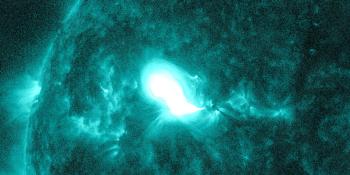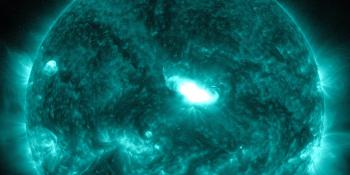Przeglądasz Archiwum z piątek, 14 lipca 2017
Wybierz potrzebny element z archiwum
Earth-directed coronal mass ejection
Sunspot region 2665 erupted this night with an M2.4 (R1-Minor) solar flare that peaked at 02:09 UTC. It was a long duration and highly eruptive event. More information about the solar flare can be found in the article that we wrote this morning.
Eruptive M2.4 solar flare
Decaying sunspot region 2665 (Beta, S07W31) produced a very long duration M2.44 solar flare that is still in progress at the time of writing. Indeed a big surprise as its magnetic layout remains rather simple and that means such a solar flare was very unlikely to happen.
Najnowsze wiadomości
Najnowsze wiadomości z forum
Wesprzyj SpaceWeatherLive.com!
Wielu ludzi odwiedza SpaceWeatherLive aby śledzić aktywność słoneczną lub sprawdzić czy jest szansa na zaobserwowanie zorzy polarnej. Niestety, większy ruch na stronie oznacza większe koszty utrzymania serwera. Dlatego, jeśli jesteś zadowolony ze strony SpaceWeatherLive, zachęcamy do wspierania nas finansowo. Dzięki temu będziemy mogli utrzymać naszą stronę.

Fakty na temat pogody kosmicznej
| Ostatnie rozbłyski klasy X | 2024/11/06 | X2.39 |
| Ostatnie rozbłyski klasy M | 2024/11/13 | M1.7 |
| Ostatnia burza geomagnetyczna | 2024/11/10 | Kp5+ (G1) |
| Dni bez plam słonecznych | |
|---|---|
| Ostatni dzień bez skazy | 2022/06/08 |
| Średnia miesięczna liczba plam słonecznych | |
|---|---|
| października 2024 | 166.4 +25 |
| listopada 2024 | 166 -0.4 |
| Ostatnie 30 dni | 163.2 +18.4 |


